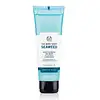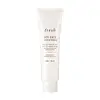What's inside
What's inside
 Key Ingredients
Key Ingredients

 Benefits
Benefits

 Concerns
Concerns

 Ingredients Side-by-side
Ingredients Side-by-side

Water
Skin ConditioningSodium Laureth Sulfate
CleansingPolysorbate 20
EmulsifyingPEG-150 Distearate
EmulsifyingSodium Cocoamphoacetate
CleansingCocamidopropyl Betaine
CleansingPhenoxyethanol
PreservativeCitric Acid
BufferingSodium Benzoate
MaskingParfum
MaskingSodium Chloride
MaskingButylene Glycol
HumectantMenthol
MaskingTrisodium Ethylenediamine Disuccinate
Aloe Barbadensis Leaf Juice Powder
Skin ConditioningFucus Vesiculosus Extract
EmollientLinalool
PerfumingBenzyl Salicylate
PerfumingBenzyl Alcohol
PerfumingPropylene Glycol
HumectantSodium Hydroxide
BufferingChondrus Crispus Extract
Skin ConditioningWater, Sodium Laureth Sulfate, Polysorbate 20, PEG-150 Distearate, Sodium Cocoamphoacetate, Cocamidopropyl Betaine, Phenoxyethanol, Citric Acid, Sodium Benzoate, Parfum, Sodium Chloride, Butylene Glycol, Menthol, Trisodium Ethylenediamine Disuccinate, Aloe Barbadensis Leaf Juice Powder, Fucus Vesiculosus Extract, Linalool, Benzyl Salicylate, Benzyl Alcohol, Propylene Glycol, Sodium Hydroxide, Chondrus Crispus Extract
Water
Skin ConditioningCoco-Glucoside
CleansingButylene Glycol
HumectantGlycerin
HumectantPropanediol
SolventXanthan Gum
Emulsifying1,2-Hexanediol
Skin ConditioningPolyglyceryl-10 Laurate
Skin ConditioningCentaurea Cyanus Flower Water
Skin ConditioningCucumis Sativus Fruit Extract
EmollientHelianthus Annuus Seed Oil
EmollientBorago Officinalis Seed Oil
EmollientHydrolyzed Soy Protein
HumectantRosa Damascena Extract
MaskingRosa Damascena Flower Water
MaskingAloe Barbadensis Leaf Juice
Skin ConditioningPanax Ginseng Root Extract
EmollientMalva Sylvestris Flower Extract
Skin ConditioningRosa Damascena Flower Oil
MaskingTocopherol
AntioxidantCaprylic/Capric Triglyceride
MaskingCaprylyl Glycol
EmollientHydrolyzed Jojoba Esters
Skin ConditioningSilica
AbrasiveCitric Acid
BufferingPentylene Glycol
Skin ConditioningCaramel
Cosmetic ColorantSodium Hydroxide
BufferingSodium Benzoate
MaskingPotassium Sorbate
PreservativeWater, Coco-Glucoside, Butylene Glycol, Glycerin, Propanediol, Xanthan Gum, 1,2-Hexanediol, Polyglyceryl-10 Laurate, Centaurea Cyanus Flower Water, Cucumis Sativus Fruit Extract, Helianthus Annuus Seed Oil, Borago Officinalis Seed Oil, Hydrolyzed Soy Protein, Rosa Damascena Extract, Rosa Damascena Flower Water, Aloe Barbadensis Leaf Juice, Panax Ginseng Root Extract, Malva Sylvestris Flower Extract, Rosa Damascena Flower Oil, Tocopherol, Caprylic/Capric Triglyceride, Caprylyl Glycol, Hydrolyzed Jojoba Esters, Silica, Citric Acid, Pentylene Glycol, Caramel, Sodium Hydroxide, Sodium Benzoate, Potassium Sorbate
 Reviews
Reviews

Ingredients Explained
These ingredients are found in both products.
Ingredients higher up in an ingredient list are typically present in a larger amount.
Butylene Glycol (or BG) is used within cosmetic products for a few different reasons:
Overall, Butylene Glycol is a safe and well-rounded ingredient that works well with other ingredients.
Though this ingredient works well with most skin types, some people with sensitive skin may experience a reaction such as allergic rashes, closed comedones, or itchiness.
Learn more about Butylene GlycolCitric Acid is an alpha hydroxy acid (AHA) naturally found in citrus fruits like oranges, lemons, and limes.
Like other AHAs, citric acid can exfoliate skin by breaking down the bonds that hold dead skin cells together. This helps reveal smoother and brighter skin underneath.
However, this exfoliating effect only happens at high concentrations (20%) which can be hard to find in cosmetic products.
Due to this, citric acid is usually included in small amounts as a pH adjuster. This helps keep products slightly more acidic and compatible with skin's natural pH.
In skincare formulas, citric acid can:
While it can provide some skin benefits, research shows lactic acid and glycolic acid are generally more effective and less irritating exfoliants.
Most citric acid used in skincare today is made by fermenting sugars (usually from molasses). This synthetic version is identical to the natural citrus form but easier to stabilize and use in formulations.
Read more about some other popular AHA's here:
Learn more about Citric AcidSodium Benzoate is a preservative. It's used in both cosmetic and food products to inhibit the growth of mold and bacteria. It is typically produced synthetically.
Both the US FDA and EU Health Committee have approved the use of sodium benzoate. In the US, levels of 0.1% (of the total product) are allowed.
Sodium benzoate works as a preservative by inhibiting the growth of bacteria inside of cells. It prevents the cell from fermenting a type of sugar using an enzyme called phosphofructokinase.
It is the salt of benzoic acid. Foods containing sodium benzoate include soda, salad dressings, condiments, fruit juices, wines, and snack foods.
Studies for using ascorbic acid and sodium benzoate in cosmetics are lacking, especially in skincare routines with multiple steps.
We always recommend speaking with a professional, such as a dermatologist, if you have any concerns.
Learn more about Sodium BenzoateSodium Hydroxide is also known as lye or caustic soda. It is used to adjust the pH of products; many ingredients require a specific pH to be effective.
In small amounts, sodium hydroxide is considered safe to use. However, large amounts may cause chemical burns due to its high alkaline.
Your skin has a natural pH and acid mantle. This acid mantle helps prevent harmful bacteria from breaking through. The acid mantle also helps keep your skin hydrated.
"Alkaline" refers to a high pH level. A low pH level would be considered acidic.
Learn more about Sodium HydroxideWater. It's the most common cosmetic ingredient of all. You'll usually see it at the top of ingredient lists, meaning that it makes up the largest part of the product.
So why is it so popular? Water most often acts as a solvent - this means that it helps dissolve other ingredients into the formulation.
You'll also recognize water as that liquid we all need to stay alive. If you see this, drink a glass of water. Stay hydrated!
Learn more about Water